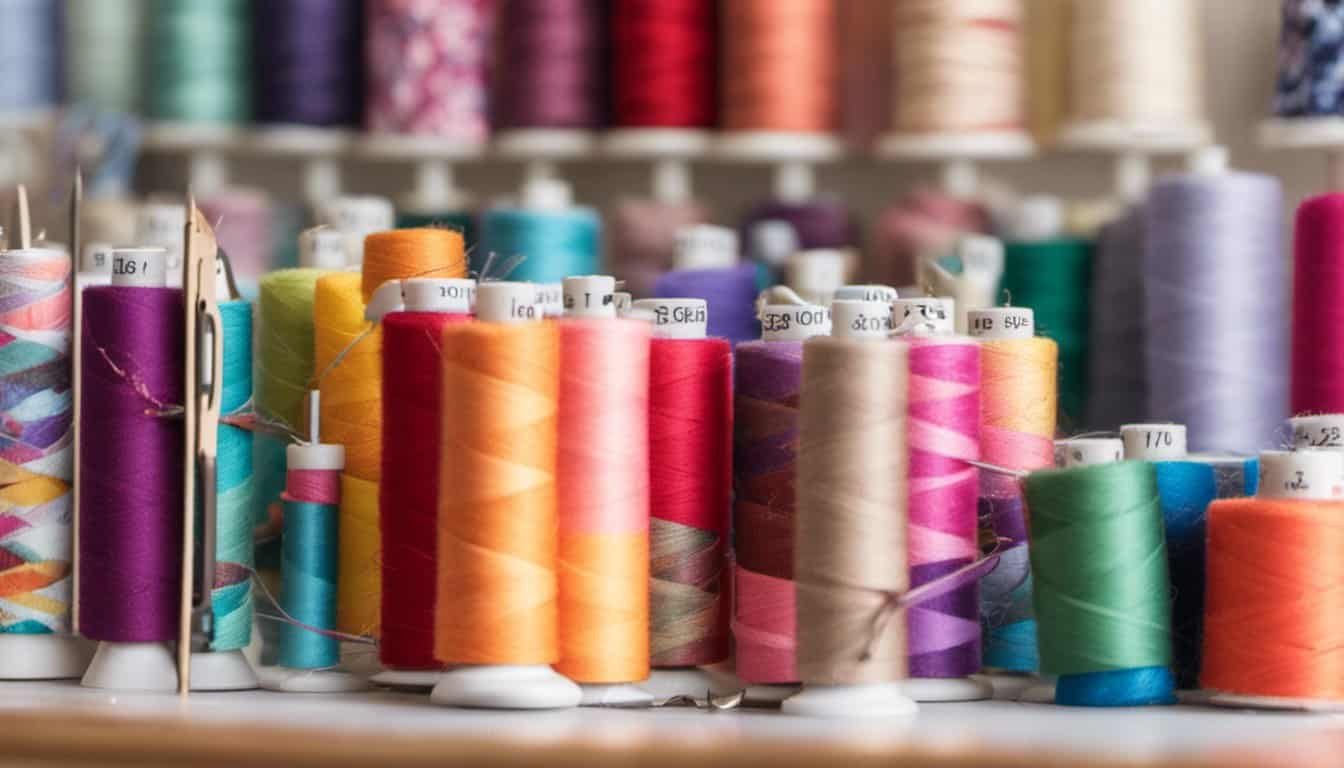Sewing your own clothes is a rewarding journey, but sometimes standard patterns just don’t fit quite right. I’ve been there, feeling frustrated when a beautiful pattern doesn’t match my unique shape. That’s why learning to customize sewing patterns can make all the difference.
Imagine transforming a basic pattern into a perfect fit tailored just for you. With a few simple tweaks, you can enhance comfort and style, ensuring every garment feels like it was made to measure. I’ll share the tips and tricks that have helped me create flattering outfits that highlight my best features.
Understanding Your Body Measurements
Accurate body measurements ensure your customized sewing patterns fit perfectly. I focus on precise measurements to create garments that enhance my unique shape.
Taking Accurate Measurements
Measuring correctly is crucial for a flawless fit. I use a flexible measuring tape and follow these steps:
- Bust: Measure around the fullest part, keeping the tape level.
- Waist: Locate the natural waistline, the narrowest point above the belly button.
- Hips: Measure the widest part around the hips.
- Shoulders: Measure from the base of one shoulder to the other.
- Arm Length: Measure from the shoulder tip to the wrist bone.
- Inseam: Measure from the crotch to the desired pant length.
Identifying Fit Preferences
Understanding how I like my clothes to fit helps in pattern customization. I consider these preferences:
- Ease: I decide how much extra room I need for comfort.
- Silhouette: I choose between fitted, relaxed, or tailored shapes.
- Length: I determine the garment length for tops, skirts, and pants.
- Sleeve Style: I select sleeve lengths and styles that complement my arms.
- Neckline: I pick neckline styles that flatter my collarbone and face shape.
By mastering my measurements and fit preferences, I tailor sewing patterns to create garments that fit beautifully and reflect my personal style.
Choosing the Right Sewing Pattern
Selecting the right sewing pattern sets the foundation for a well-fitting garment. It ensures that the final piece complements your unique body shape and style preferences.
Selecting Patterns Suited to Your Shape
Identify patterns that match your body type for the best fit. If you have an hourglass figure, opt for patterns with cinched waists and defined hips. For pear-shaped bodies, choose designs that highlight the upper body while gracefully accommodating wider hips. Apple-shaped individuals benefit from patterns that create a balanced silhouette by emphasizing the legs and neckline. Rectangular shapes can enhance curves with patterns that add structure and shape through darts and seams.
Evaluating Pattern Size and Design
Check the pattern’s sizing chart against your measurements for accuracy. Patterns vary by brand, so always compare key measurements like bust, waist, and hips. Assess the design elements to ensure they align with your fit preferences. Look for adjustable features such as darts, seams, and flank modifications that allow for customization. Consider the garment’s style details, like sleeve length, neckline shape, and overall silhouette, to make sure they suit your personal taste and body proportions.
Tools and Materials Needed
Tools
- Measuring Tape: I use a flexible cloth measuring tape for accurate body measurements.
- Ruler and French Curve: These help me create straight lines and smooth curves when adjusting patterns.
- Pattern Paper: I rely on pattern paper to trace and modify sewing patterns effectively.
- Scissors: Sharp fabric scissors and separate pattern scissors are essential for clean cuts.
- Notcher and Seam Ripper: I utilize a notcher to mark seam allowances and a seam ripper to fix mistakes.
- Pins and Pin Cushion: Keeping fabric pieces in place with pins organized in a pin cushion is crucial.
- Tailor’s Chalk or Fabric Marker: I mark adjustments directly on the fabric using tailor’s chalk or a fabric marker.
Materials
- Sewing Machine: A reliable sewing machine is fundamental for constructing garments.
- Thread: High-quality thread that matches your fabric ensures durability and a professional finish.
- Fabric: Selecting the right fabric based on your garment type and pattern requirements is important.
- Interfacing: I incorporate interfacing to add structure to areas like collars and cuffs for a polished look.
Techniques for Pattern Customization
Customizing sewing patterns ensures a perfect fit tailored to your body. Here are key techniques to adjust patterns effectively.
Adjusting Pattern Lines
Altering pattern lines shapes the garment to your contours. Begin by pinning the pattern to a muslin mock-up, identifying areas that need adjustment. Use a French curve to redraw lines smoothly, ensuring curves match your body’s natural lines. Seam ripper helps remove existing lines without damaging the pattern. Mark new lines clearly with tailor’s chalk or a fabric marker for precise adjustments.
Modifying Patterns for Length and Fit
Changing garment length enhances overall fit and style. Measure desired garment length from your measurements and compare it to the pattern. Extend or shorten the pattern lines evenly on both sides to maintain symmetry. For a better fit, adjust the side seams by adding or reducing width according to your measurements. Test modifications on a muslin fabric to ensure accuracy before cutting your final fabric.
Common Adjustments for a Perfect Fit
Achieving a flawless fit involves making specific adjustments to various parts of your sewing pattern. Here are the key areas to focus on:
Waist and Bust Adjustments
Adjusting the waist and bust areas ensures that your garment complements your body’s proportions. Here’s how I approach these adjustments:

- Taking Accurate Measurements
- Bust: Measure around the fullest part.
- Waist: Measure at the narrowest point.
- Hip: Measure around the fullest part of your hips.
- Calculating the Difference
Compare your measurements to the pattern’s sizing chart to determine the necessary adjustments.
- Altering the Pattern
- Bust Adjustment:
- Add or subtract the required amount evenly on both sides of the bust line.
- Use a French curve to redraw smooth lines.
- Waist Adjustment:
- Pin extra fabric into the waist area on the mock-up.
- Redraw the waistline to match your measurements.
- Testing on Muslin
- Sew a test garment using muslin fabric to ensure the adjustments achieve the desired fit.
- Make further tweaks as needed before cutting into your final fabric.
Sleeve and Hem Modifications
Modifying sleeves and hems can enhance the overall silhouette and comfort of your garment. Here’s my method for these adjustments:
- Sleeve Adjustments
- Lengthening or Shortening:
- Measure the desired sleeve length.
- Adjust the pattern’s sleeve line accordingly.
- Width Adjustment:
- Pin the sleeve to the muslin mock-up.
- Redraw the sleeve cap or hem to achieve the desired fit.
- Hem Adjustments
- Length Adjustment:
- Determine the required hem length.
- Mark the new hemline on the pattern.
- Shape Modification:
- For flared or tapered hems, adjust the pattern’s side edges.
- Ensure symmetry by measuring both sides equally.
- Reinforcing Adjustments
- Add interfacing to reinforce sleeve caps or hems if necessary.
- Use bar tacks at stress points to prevent stretching.
- Final Fitting
- Sew the adjusted sleeves and hems onto the muslin.
- Check for ease of movement and overall appearance.
- Make additional adjustments to perfect the fit.
By carefully adjusting the waist, bust, sleeves, and hems, I tailor each garment to fit seamlessly, enhancing both comfort and style.
Tips for Successful Customization
- Accurate Measurements
- I take precise measurements using a flexible tape. Key areas include bust, waist, hips, shoulders, arm length, and inseam. Accurate measurements prevent fitting issues.
- Fitting Muslin Mock-Ups
- I create a test garment with muslin fabric. This process reveals areas needing adjustment, allowing me to refine the pattern before using final fabric.
- Marking Adjustments Clearly
- I mark new pattern lines with tailor’s chalk or a fabric marker. Clear markings ensure modifications are easy to follow during cutting and sewing.
- Using a French Curve for Smooth Lines
- I use a French curve to redraw pattern lines smoothly. This tool helps maintain the garment’s intended silhouette and proportions.
- Testing Adjustments
- I test all changes on muslin before cutting the final fabric. Testing confirms that adjustments achieve the desired fit and style.
- Referencing Sizing Charts
- I compare my measurements against pattern sizing charts. This reference guides initial adjustments, aligning the pattern size with my body dimensions.
- Staying Organized
- I keep a record of all pattern changes. Organized notes help replicate adjustments for future projects, streamlining the customization process.
Essential Tools for Customization
| Tool | Purpose |
|---|---|
| Flexible Measuring Tape | Taking precise body measurements |
| French Curve | Redrawing smooth pattern lines |
| Tailor’s Chalk | Marking new pattern adjustments |
| Sharp Scissors | Cutting pattern and fabric accurately |
| Notcher | Creating small notches for pattern alignment |
Implementing these tips ensures each garment fits perfectly and reflects personal style.
Conclusion
Customizing sewing patterns has truly transformed the way I approach my projects. It’s empowering to create garments that fit perfectly and showcase my unique style. The journey from measuring to making adjustments might seem daunting at first, but it’s incredibly rewarding.
« 7 Secrets on How to Sew a Straight Stitch on a Machine Perfectly
10 Mind-Blowing Tips for Mastering the Backstitch: A Step-by-Step Guide »
Every tweak brings me closer to a piece that feels tailor-made just for me. Plus, the skills I’ve gained open up endless possibilities for future creations. I’m excited to keep experimenting and refining my techniques, knowing that each garment I sew reflects who I am.
Happy sewing! Here’s to making clothes that fit like a dream and bring joy to your wardrobe.

















